First-Ever Ferntastic Fair at Lincoln University Celebrates Native Ferns
Office of Communications and Marketing
Young Hall
820 Chestnut Street
Jefferson City, MO 65101
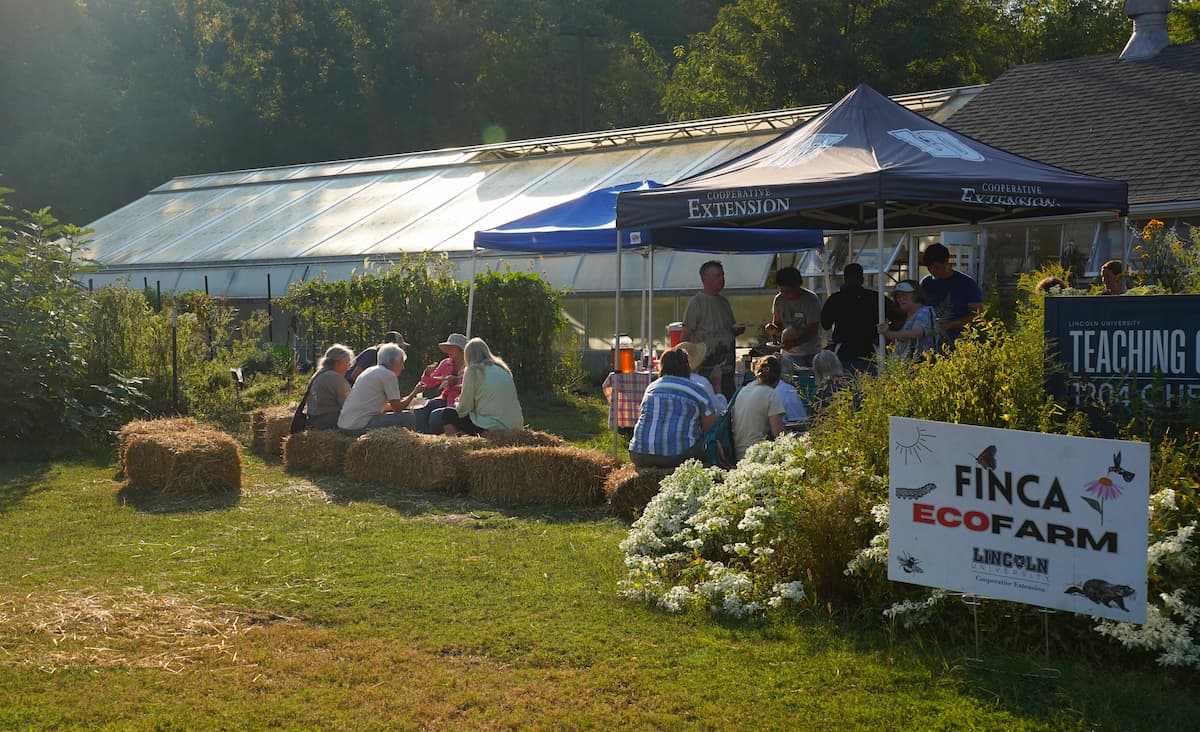 Guests gather outside the greenhouse at Lincoln University’s Finca EcoFarm during the first Ferntastic Fair.
Guests gather outside the greenhouse at Lincoln University’s Finca EcoFarm during the first Ferntastic Fair.
Lincoln University Cooperative Extension’s (LUCE) Specialty Crops and Native Plants Program hosted the first-ever Ferntastic Fair at its Finca Eco-Farm, the program’s home for native plant research and education. The fair highlighted the role of native ferns in the nursery trade and showed how these plants extend beyond the forest floor into the garden, the kitchen and the arts.
“People love native ferns, but when you look for them in nurseries, they’re often sold out or replaced with tropical species that don’t survive the winter outdoors,” said Dr. Nadia Navarrete-Tindall, who leads LUCE’s Specialty Crops and Native Plants Program. “By having this fair, we hoped to raise awareness about native fern diversity and show they can be grown in shade gardens, used indoors or even explored for edible and value-added products.”
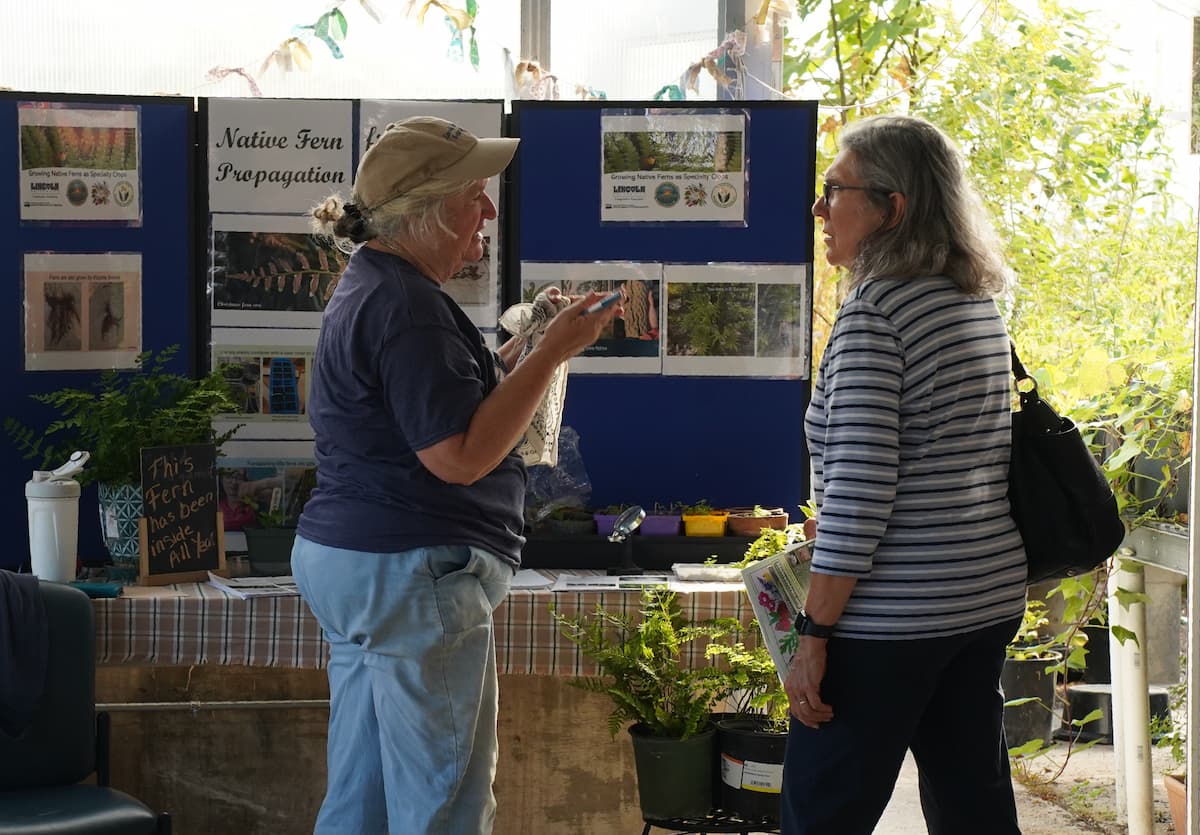 Sue Bartelette (left) of Lincoln University’s Specialty Crops and Native Plants Program speaks with a visitor about fern propagation.
Sue Bartelette (left) of Lincoln University’s Specialty Crops and Native Plants Program speaks with a visitor about fern propagation.
Propagation demonstrations gave guests the chance to learn how to grow native ferns from spores. The hands-on sessions showed how they can be propagated at home or for sale without a greenhouse or expensive equipment. The activity underscored the program’s goal of helping people not only appreciate ferns but also grow them successfully in both home gardens and commercial settings.
Botanist Justin Thomas of the Institute of Botanical Training, who has previously collaborated with Lincoln University on native fern workshops, took part in the fair by answering questions about fern identification, propagation and ecology. He said he was impressed by the turnout and by people’s curiosity about native ferns.
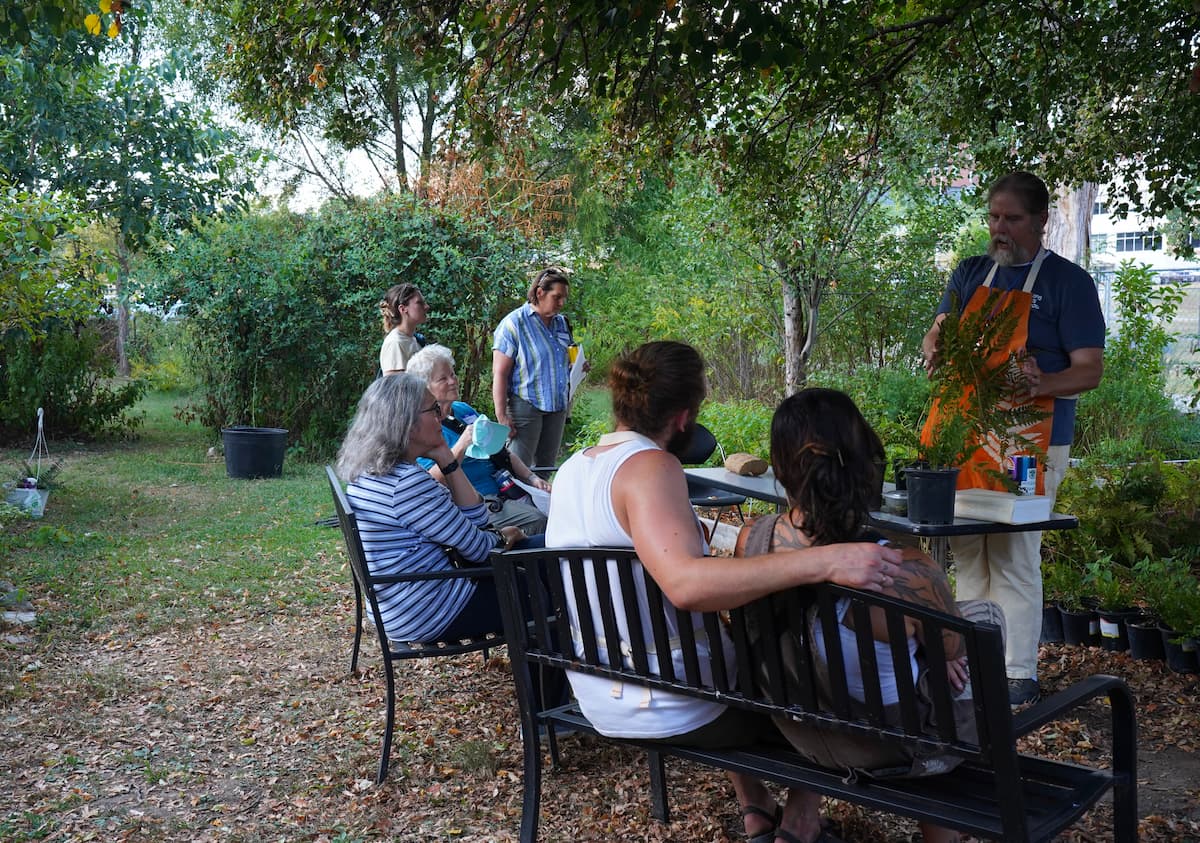 Botanist Justin Thomas of the Institute of Botanical Training talks with visitors about native ferns during the Ferntastic Fair.
Botanist Justin Thomas of the Institute of Botanical Training talks with visitors about native ferns during the Ferntastic Fair.
“I came to the fair hoping to learn the names of the ferns I see in my woods, and Justin was very helpful,” said attendee Bev Price, who described the fair as fun and informative.
Across the farm, outdoor demonstration sites displayed a wide range of native fern species growing side by side. These plantings illustrated the diversity of Missouri’s native ferns and gave participants a deeper appreciation for how easily these plants adapt to both natural and cultivated landscapes.
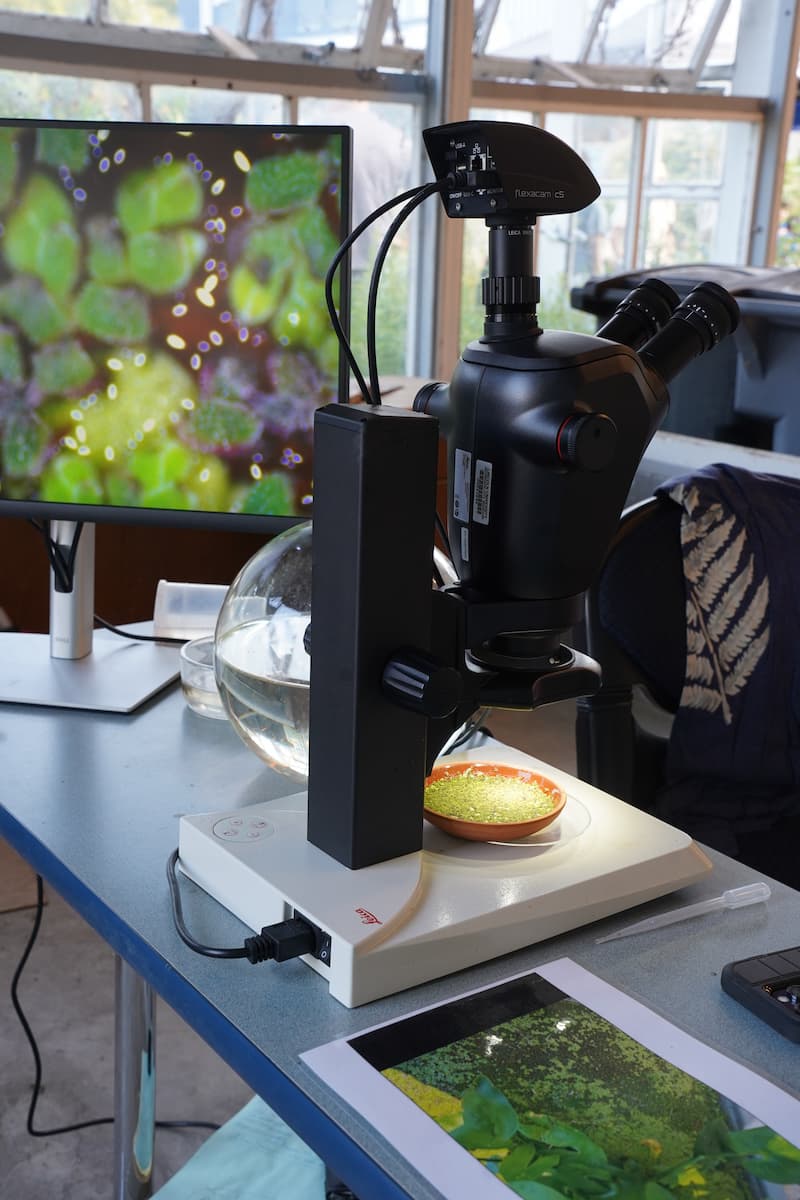 A digital microscope display featured aquatic mosquito ferns (Azolla caroliniana).
A digital microscope display featured aquatic mosquito ferns (Azolla caroliniana).An educational station on the aquatic mosquito fern (Azolla caroliniana) was led by Dr. Jim Wetzel with LUCE’s Aquaculture Program. Using a digital microscope, he guided visitors through a close look at the fern’s tiny structures and the insects interacting with it. This activity offered a unique perspective on aquatic ecology and highlighted the role of native plants in healthy water systems.
Inside the teaching greenhouse, container displays showcased an array of fern species. The exhibits highlighted the versatility of ferns as both hardy native plants and attractive houseplants, showing how they can thrive in settings ranging from natural landscapes to living rooms.
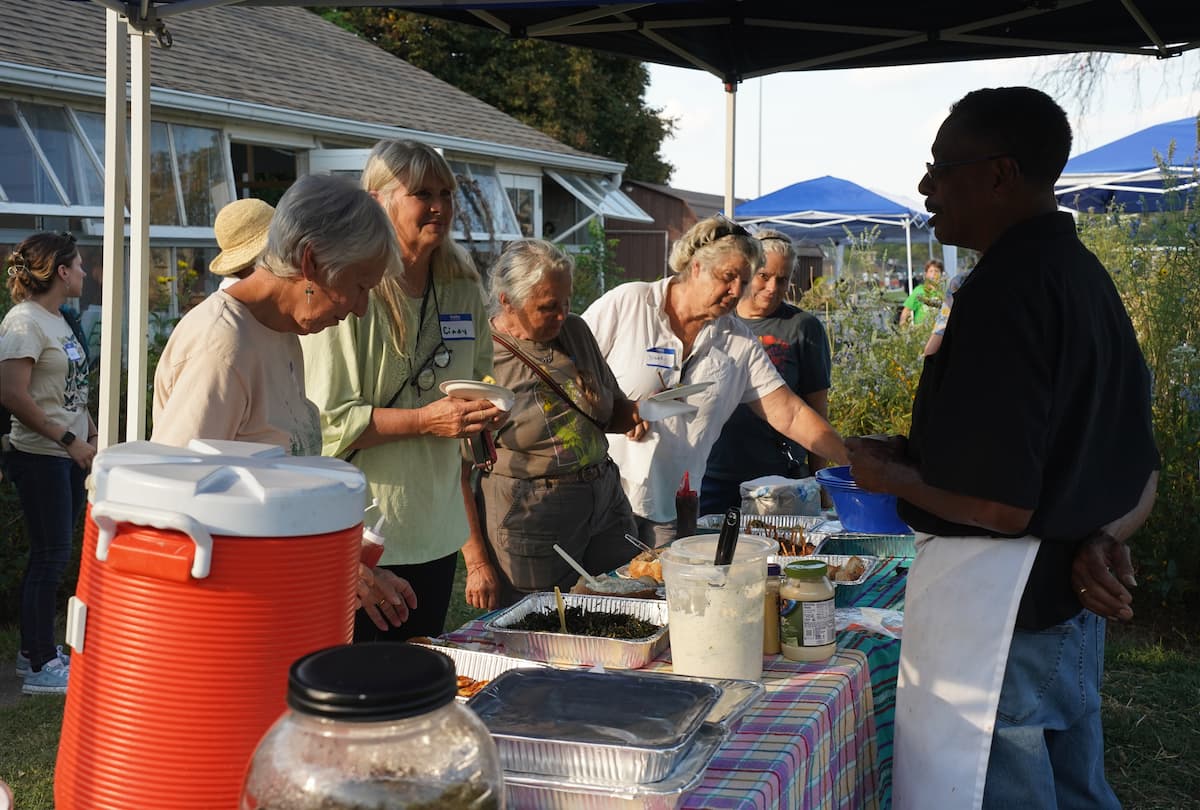 Chef Robert Rusan of St. Louis serves native plant dishes to guests.
Chef Robert Rusan of St. Louis serves native plant dishes to guests.
Food also played a central role in the fair. Chef Robert Rusan of St. Louis prepared a buffet featuring fiddlehead fern dip with wild leeks, meatballs made with native dittany, sochan quiche cups with sauteed greens, wild plum cheesecake with a native plum sauce and more. Rusan has previously collaborated with the program on educational native plant–themed dinners.
“Nearly all of the ingredients came straight from the gardens here at Finca Eco-Farm,” Chef Rusan said, inviting participants to experience a literal taste of Missouri’s natural abundance.
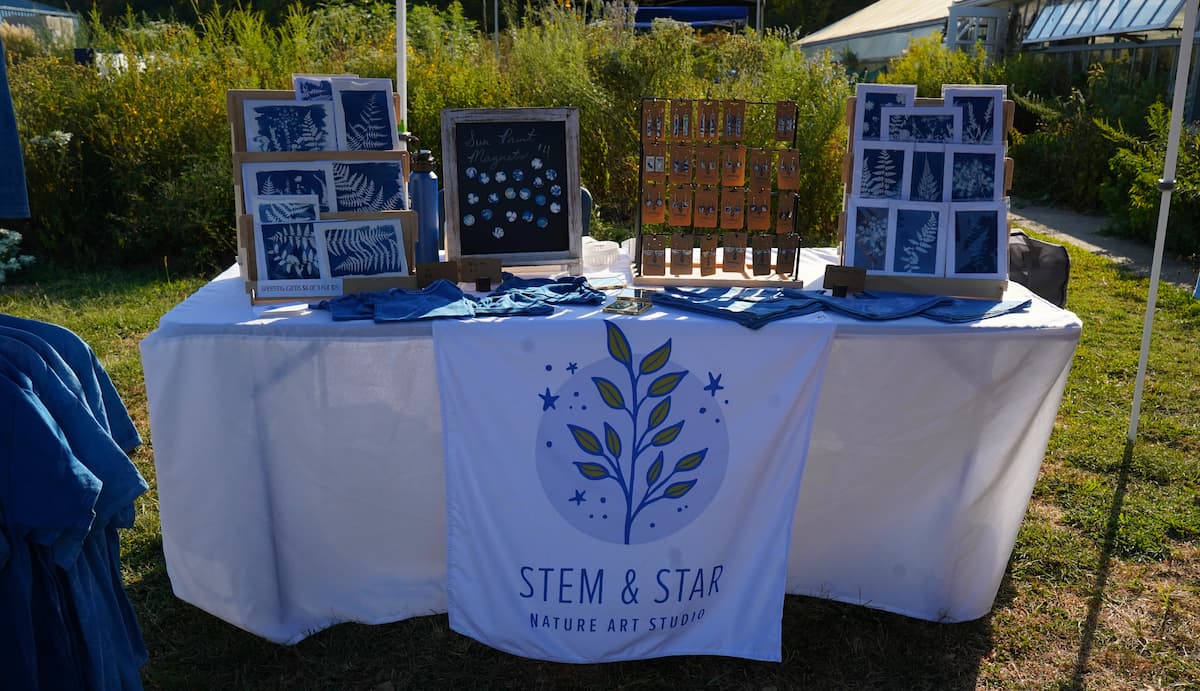 Fern-inspired prints and artwork were displayed and for sale at the Stem & Star Nature Art Studio booth.
Fern-inspired prints and artwork were displayed and for sale at the Stem & Star Nature Art Studio booth.
In addition to purchasing native ferns at the fair, visitors could browse fern-inspired art at the Stem & Star Nature Art Studio booth. The vendor offered greeting cards, tea towels, baby clothes and other pieces featuring botanical prints, many highlighting fern motifs. The displays reinforced the fair’s theme that native plants can spark both conservation and creativity.
The Specialty Crops and Native Plants Program also invited guests to engage directly with art-making. Participants created cards using pressed ferns and flowers or designed stenciled prints with paint to leave detailed impressions on paper. The handmade cards illustrated another way ferns can be enjoyed and gave visitors something to share or save as a reminder of the day.
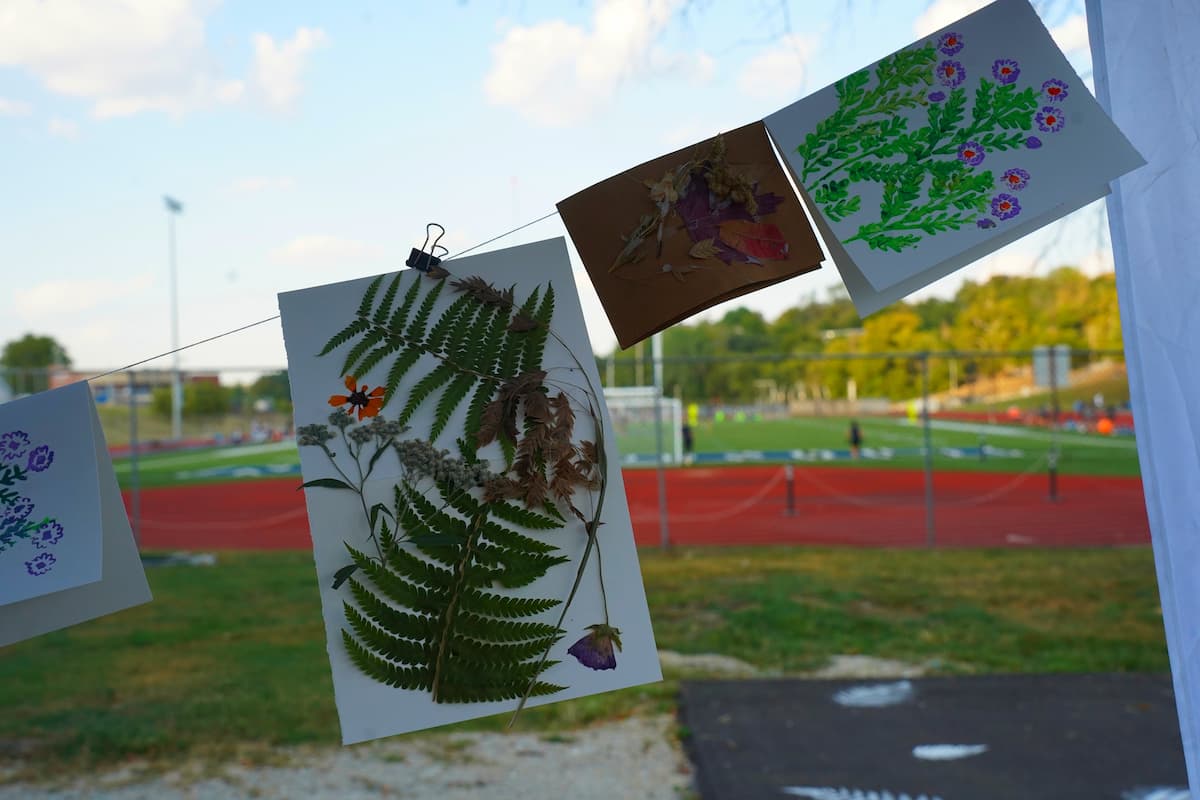 Handmade cards decorated with pressed ferns, flowers and paint dry on a line at Lincoln University, with the campus track and football field in the background.
Handmade cards decorated with pressed ferns, flowers and paint dry on a line at Lincoln University, with the campus track and football field in the background.
A Missouri Department of Agriculture specialty crops grant, “Growing Native Ferns as Specialty Crops in Missouri,” funded the Ferntastic Fair along with earlier fern identification workshops and grower surveys. These efforts were carried out in collaboration with the Grow Native! program and Missouri Prairie Foundation. Through these activities, participants learned how native ferns can be grown for home gardens or sale as specialty crops, while also seeing how they conserve resources, adapt to local conditions and even inspire new uses in the kitchen — reflecting LUCE’s mission to connect research with the public.
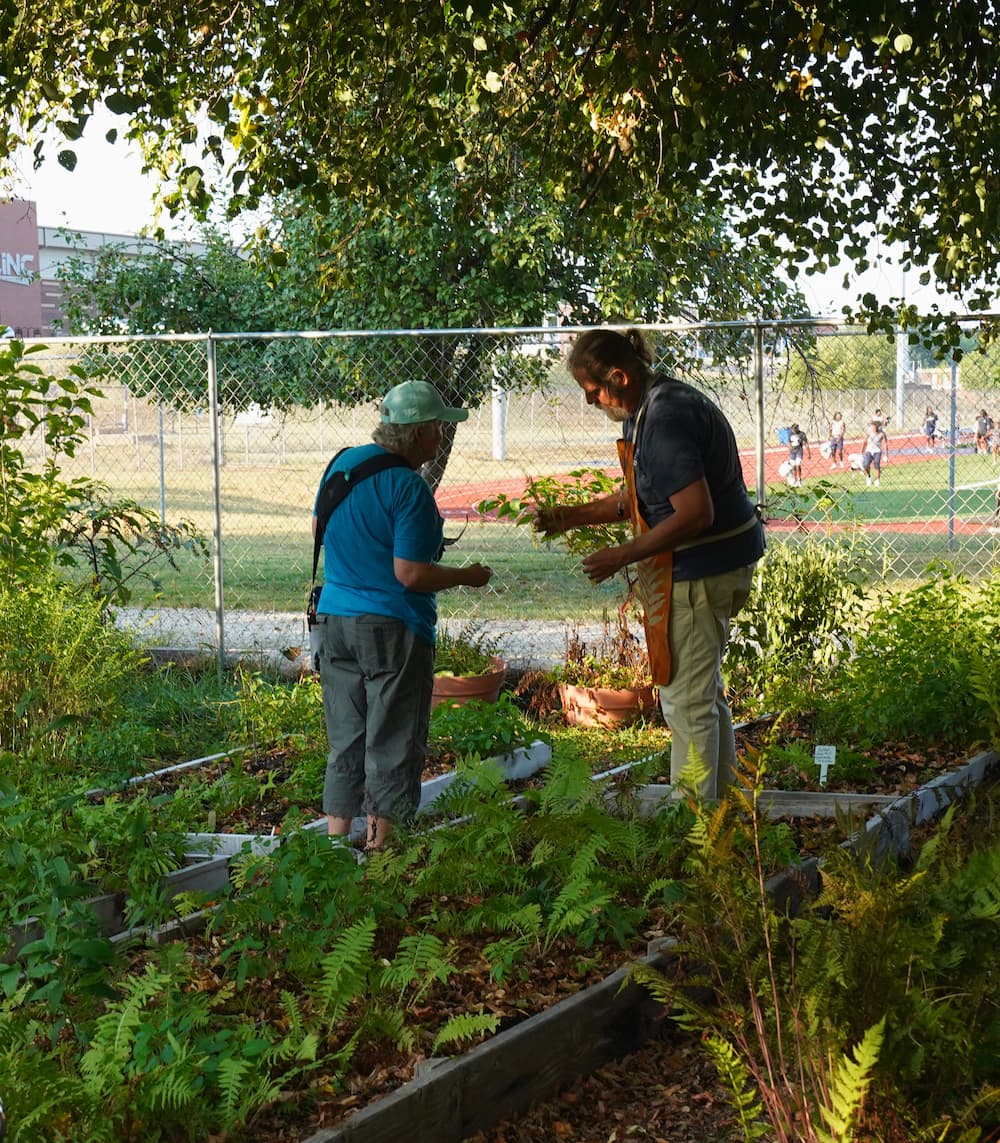 Botanist Justin Thomas talks with a visitor among the demonstration beds of native ferns at the Ferntastic Fair.
Botanist Justin Thomas talks with a visitor among the demonstration beds of native ferns at the Ferntastic Fair.
“When I heard about the fair, I was curious,” said attendee Tammy Wood. “I’m becoming more interested in native plants because they’re easier to grow and better for the environment and wildlife. This event was a great way to learn more and see what Lincoln University is doing.”
Click here to view the full Ferntastic Fair 2025 photo album. Photos taken by Jenny Marie Lawrence.
